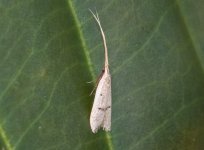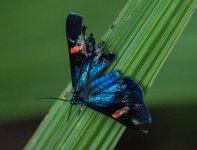Have checked a lot of resources online and haven't found anything very close to these that makes me confident I'm getting close to an ID. Even getting to the family level would be helpful. Both were taken in upper montane forest in Sabah in Mount Kinabalu National Park (maybe 1500 meters elevation). (Pretty sure the blue one is a moth, but not certain!)
-
Welcome to BirdForum, the internet's largest birding community with thousands of members from all over the world. The forums are dedicated to wild birds, birding, binoculars and equipment and all that goes with it.
Please register for an account to take part in the discussions in the forum, post your pictures in the gallery and more.
Borneo moth IDs (1 Viewer)
- Thread starter Jim M.
- Start date






